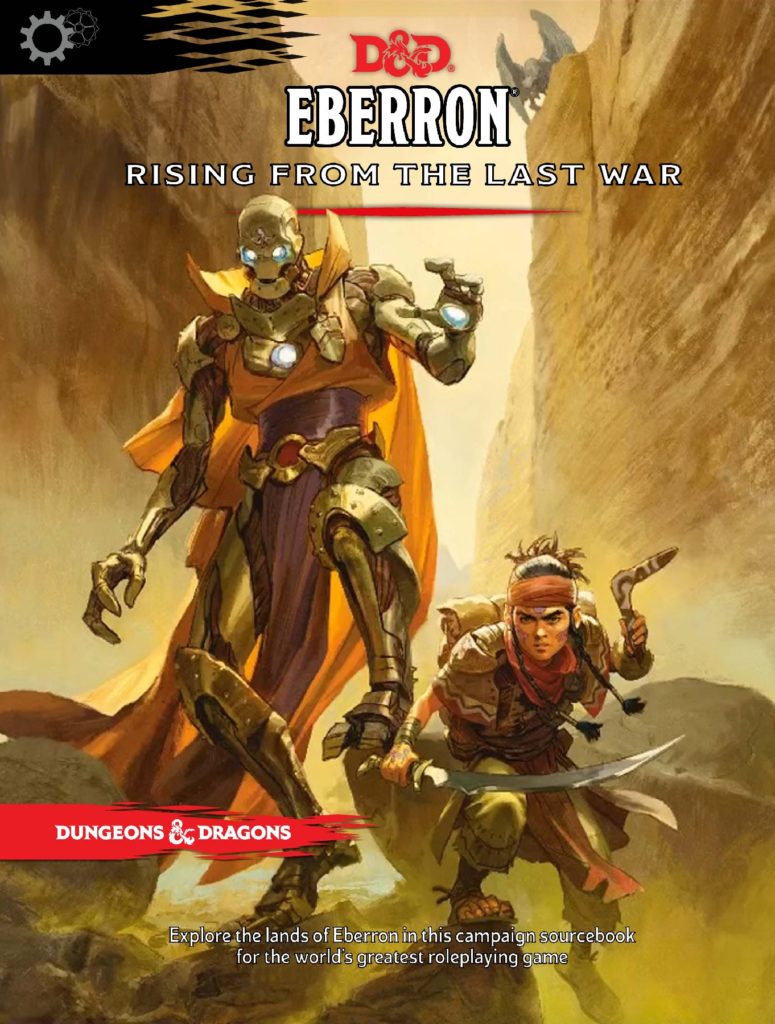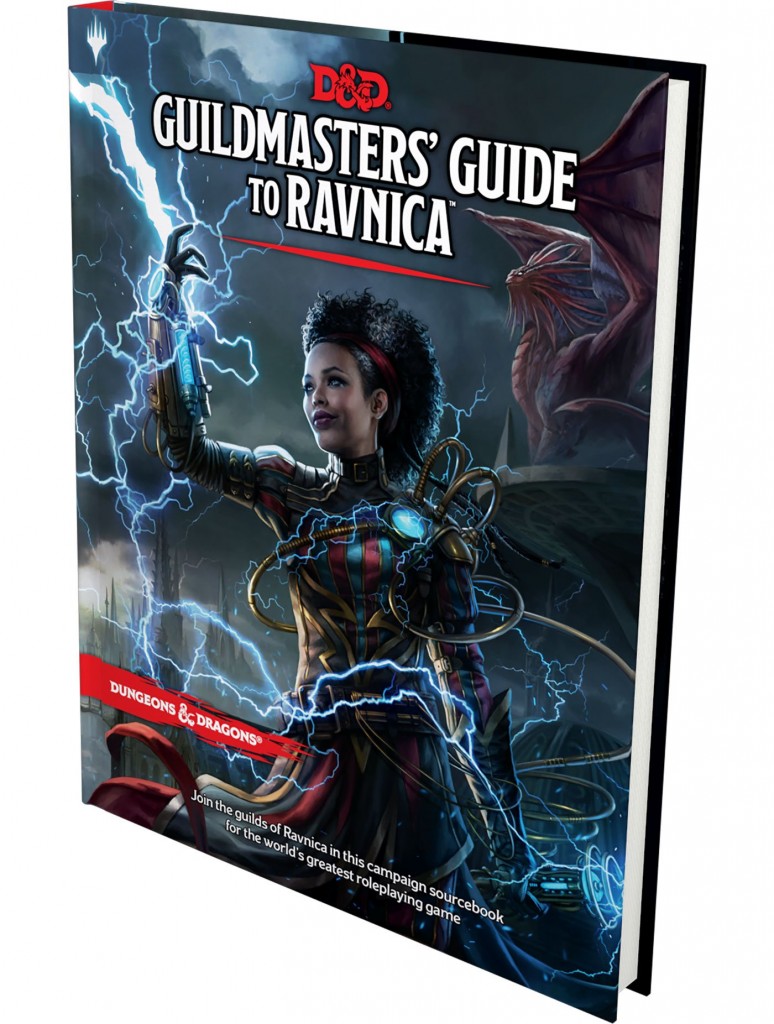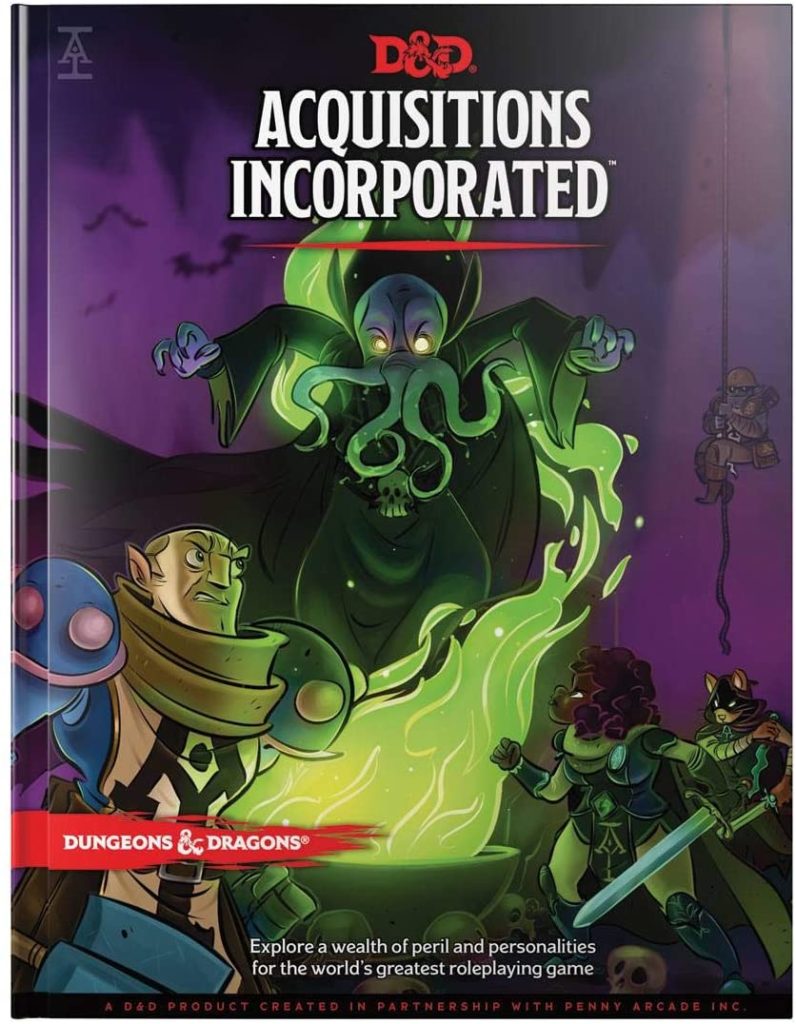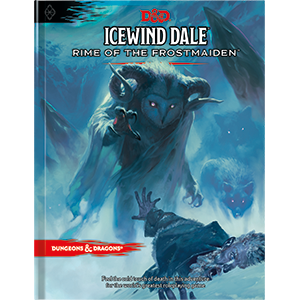The Many Worlds of Dungeons & Dragons (Fifth Edition, that is)
When I began playing Dungeons & Dragons as a teen in the early 1990’s, my initial few games were played in homebrew worlds of the Dungeonmaster’s creation. And, while this has always been a popular part of Dungeons & Dragons, it wasn’t long until I became enamored with the established worlds that were officially sanctioned and supported by setting materials, nor was I the only one. These worlds have been the setting of countless adventures throughout the decades.
For me, the first D&D world I fell in love with was Krynn, the world that is the basis of the Dragonlance storyline. The first trilogy of novels that introduce the world, Chronicles, is a solid adventure, but I could at times almost feel the dice rolling in the background of the combat encounters. The follow-up trilogy, Legends, has a completely different feel, with a much deeper and personal storyline, time travel, complex morality, and an overall that I was surprised to find in novels that were in a tie-in series. I’ve since read some great tie-in literature (see, for example, my reviews of the Pathfinder Tales novels by James L. Sutter, Death’s Heretic and The Redemption Engine), but Legends continues to stand out. And, in terms of adventure, the unusual Dark Sun setting made for some of the most memorable adventures of my teenage years.
These settings were released in AD&D 2nd Edition in the form of setting boxes, with adventures and rulebooks that gave the specific information needed to design characters and campaigns. The current edition of Dungeons & Dragons hasn’t begun releasing similar setting boxes, but they have released supplements spanning a variety of gaming worlds … though not spanning all of their traditional worlds (yet!).
Forgotten Realms
If you look at the setting information in the Dungeons & Dragons Player’s Handbook, you’ll find deities from the classic Greyhawk setting. Despite this, the main adventure setting for supplements published in relation to Dungeons & Dragons 5e has been using the Forgotten Realms adventure setting. Here’s a brief rundown of those adventures:
- Hoard of the Dragon Kings (Amazon, Wizards) and Rise of Tiamat (Amazon, Wizards), recently combined in a single volume as Tyranny of Dragons (Wizards)
- Princes of the Apocalypse (Amazon, Wizards)
- Out of the Abyss (Amazon, Wizards)
- Storm King’s Thunder (Amazon, Wizards)
- Tales of the Yawning Portal (Amazon, Wizards)
- Tomb of Annihilation (Amazon, Wizards)
- Waterdeep: Dragon Heist (Amazon, Wizards)
- Waterdeep: Dungeon of the Mad Mage (Amazon, Wizards)
- Baldur’s Gate: Descent into Avernus (Amazon, Wizards)
- Icewind Dale: Rime of the Frostmaiden (Amazon, Wizards)
Despite the strong focus on the Forgotten Realms setting, that isn’t the only world they’ve explored.
Eberron
Eberron is an intriguing setting, created by Keith Baker as the winner of a 2002 Fantasy Setting Search from Wizard’s of the Coast, to create a new campaign setting for Dungeons & Dragons 3E. (Baker went on to do more game design work, most notably creating the card game Gloom.)
The game is set in the aftermath of a vast devastating war. One of the most distinctive elements of this setting is the warforged race, a species of constructs that are allowable as player characters, along with the spirit-bound Kalashtar and Shifter races. There’s also more of an emphasis on technology, with a dark and almost uniquely steampunk feel to the setting, in comparison to most of the other established settings.

In D&D 5e, Eberron returned initially through the digital Wayfinder’s Guide to Eberron. This supplement apparently did well enough to justify expanding into a full book, with 2019’s Eberron: Rising from the Last War (Amazon, Wizards). Aside from the character information, setting details, NPCs, foes, and magical items, new game elements like dragonmarks and group patrons allow for further customization.
Magic: The Gathering
Though they’re also the owners and publishers of Dungeons & Dragons, Wizards of the Coast rose to prominence as the creators of the card game Magic: The Gathering. Over the last few years, they have melded these two intellectual properties together by releasing supplements that allow players to create characters and games within the worlds of Magic.
The first of these supplements was the 2018 Guildmaster’s Guide to Ravnica (Amazon), establishing the city controlled by rival guilds as a setting for Dungeons & Dragons. The Guildpact, which has maintained the peace among these factions, is falling apart, providing conflict and adventure aplenty for Ravnica characters.

For gamers looking toward a more mythic style of adventure, Wizards released Mythic Odysseys of Theros (Amazon, Wizards) in June 2020. The divine power of this realm results in character options of Supernatural Gifts during character creation, and the adventure options presented here are geared toward building truly mythic god-infused stories.
Online Played Games Turned Setting
Perhaps most unexpected (to me, at least) of the settings rolling out two resources that are tied into well-established online Dungeons & Dragons games, Critical Role and Acquisitions Incorporated.
I’ll start with Acquisitions Incorporated, because I’m more familiar with that series of games. This is a very meta podcast, focusing on humor, about the business Acquisitions Incorporated. As you may have guessed, they acquire things. Their website hosts the archives of their adventures, which began in 2008, mostly taking the form of live convention games at PAX events, but over the last few years also manifesting as a podcast with their franchise, called “The ‘C’ Team.” The live events include the two founders of Penny Arcade, Jerry Holkins and Mike Krahulik, as well as a revolving cast of players from the gaming world and convention circuit.
Published in summer of 2019, Acquisitions Incorporated (Amazon, Wizards) provides all of the information needed to play an Acquisitions Incorporated adventure or campaign. Acquisitions Incorporated itself is set within the world of the Forgotten Realms, so it isn’t so much a setting book as a thematic book that focuses on a variant style of play. The game has taken the characters across dimensions, so I’ve introduced a variety of Acquisitions Incorporated franchises and Easter eggs into games set in Pathfinder‘s Golarion and other settings, since there’s no reason to anticipate that some enterprising Acquisitions Incorporated offices won’t be established in other lands.

While much of the book focuses on the thematic tone for a corporate-growth campaign, there are mechanics introduced toward this end. Most notably, each member of a franchise gains a new role within the organization, which involves growth independent of their class experience, where they unlock new features and abilities as they progress within the organization. There are new franchise-related downtime activities, like building the franchise, marketeering, establishing and building your headquarters, schmoozing, team-building, and philanthropic enterprises. And then assortments of backgrounds, class options, spells, NPCs, and enemies help round out the book, along with a 100+ page adventure called “The Orrery of the Wanderer,” providing the perfect springboard for an Acquisitions Incorporated campaign.
By contrast, 2020’s Explorer’s Guide to Wildemonte (Amazon, Wizards) is a setting book that explores the world of the popular game Critical Role. Again, it contains everything you need to engage in a game within this setting, whether you’re a die-hard fan of the series or a novice who is coming to the game without any background knowledge of the setting. The 304-page book has about 40 pages of character options, but really the substance of the book is a world guide to the setting. Four introductory adventures, as well as a “Heroic Chronicle” section to establish a rich character backstory, help to establish the group of players who will engage with this setting.

It seems as though the 5th Edition settings are pointed at “parley” (negotiation/diplomacy) as much as to “melee” (combat) encounters. Is that due to the focus of 5th Ed. or am I simply being fooled by the small sample?